
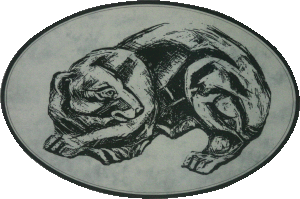
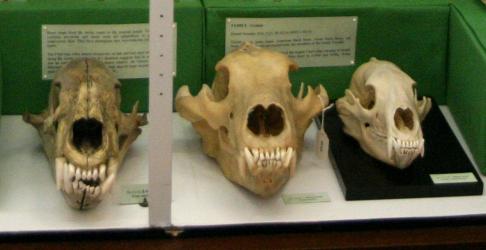
ORDER CARNIVORA
FAMILY URSIDAE
BEAR FAMILY
General features and members of the family
The family Ursidae comprises 8 species of bears in five genera: brown bears, polar bears, American black bears, Asian black bears, sun bears, sloth bears, spectacled bears and the Giant Panda. Members of this family are distributed from the Arctic coasts to tropical jungles. The bear family is one of five families of dog-like mammals descended from the wolf-like Vulperines.
The brown bear (Ursus arctos) is the most widespread of all bears and different geographical populations are sometimes considered as three separate subspecies: the North American grizzly bear (U. arctos horribilis), the Kodiak bear (U. arctos middendorffi) from Kodiak Island, off Alaska, and the Eurasian brown bear (U. arctos arctos).
The Giant Panda (Ailuropoda melanoleuca) has recently been shown to represent an early divergence from the bear family, although it is sometimes assigned to the Family Procyonidae. The panda, which lives in central and west China, is unique in eating bamboo.
Bears include some of the largest carnivorans, although others are relatively small. Polar bears may reach 3 metres in height and 650 kg in weight and before hibernation through the winter, they lay down large amounts of fat and an adult male may reach a weight of 800 kg or more. The sun bear is 1.10m high and 27 kg in weight.
 |
| A polar bear in the Edinburgh Zoological Gardens. This bear illustrates the general appearance of the bear family. Typically Ursids have heavy limbs, plantigrade feet and non-retractile claws. |
Skulls, dentition and diet
Bears have elongated crushing pre-molar and molar teeth, which equip them for omnivorous diets. Most feed on a mixture of flesh and vegetable matter although polar bears rely almost exclusively on flesh. The basic dental formula: I3/3, C1/1, PM 2-4/2-4, M2/3 = 34 - 42, but there are variations between species and individuals within species.
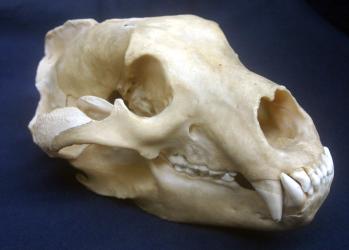 |
| Brown bear skull (Dental formula: I3/3, C1/1, PM2-4/2-4, M2/3 = 34 - 42). The three subspecies of brown bear (Ursus arctos) - the grizzly bear, the Kodiak bear and the Eurasian bear - live in a variety of habitats including forests, shrubby subalpine to open tundra regions, desert to semi-desert. Brown bears are omnivorous and feed on a varied diet of vegetable matter - succulent vegetation, tubers, fruit and berries - and the flesh of invertebrates (insects, grubs) and vertebrates (small rodents, beaver, salmon and trout, young deer, domestic livestock) and carrion. |
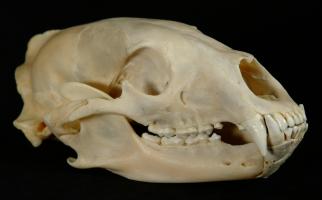 |
| American black bear skull (Dental formula: I3/3, C1/1, PM 2-4/2-4, M 2/3 = 34-42). The American black bear (Ursus americanus) occurs throughout Canada and the U.S.A. except for the central plains states. A number of different subspecies have been identified in different geographical locations. Their diets resemble that of the brown bear. |
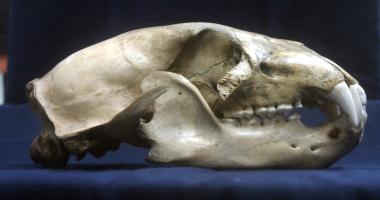 |
| Polar bear skull (Dental formula: I3/3, C1/1, PM2-4/2-4, M2/3 = 34 - 42). The polar bear (Ursus maritimus) is found throughout the circumpolar arctic regions. Polar bears feed on seals, less frequently on walruses and Beluga whales, and carrion as well as small mammals, birds, eggs and vegetation. The molars and premolars are more jagged and sharper than the flat grinding teeth of other bears reflecting their carnivorous diet. Its dentition suggests that its recent ancestor was omnivorous like the brown bear, which is its closest relative. |
| Dog-like carnivorans | Aquatic carnivorans | Cat-like carnivorans |
|---|---|---|
|
|
|






